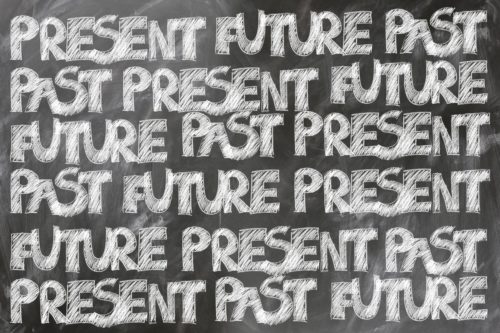Hello everyone!
When I first began researching the history of cannabis, I discovered what a huge undertaking this would be! Cannabis has been used by humanity for thousands of years, and has been cultivated and traded all over the world. So, for the purposes of this article, we’re going to discuss just the history of cannabis in the United States, and only from about the year 1900 onward. We’re also not going to get too in-depth on the political, moral, and racial reasoning behind cannabis prohibition, as entire books have been written on that subject. With that said, I present to you a historical timeline of cannabis in the United States!
—
From 1850 to 1941, cannabis was listed in the U.S. Pharmacopoeia as a substance with many medical uses. Imported primarily from Mexico, cannabis was found in tinctures sold at pharmacies and general stores for a large variety of ailments.
In 1906, the U.S government passed the “Pure Food and Drug Act”, which required the labeling of any product that contained alcohol, opiates, cocaine, and cannabis.
In 1910, the Mexican Revolution caused an influx of Mexican immigrants, which helped introduce the concept of recreational consumption of cannabis to the USA.
In 1915 and through 1927, cannabis prohibition begins in the United States, starting in California. Several other states follow suit.
Despite this, the 18th Amendment to the U.S. Constitution banned the manufacture and sale of alcohol, and proponents of alcohol prohibition touted cannabis as a safe, attractive alternative to alcohol consumption.
In 1933, the U.S. Congress repealed Alcohol Prohibition, turning their focus on the prohibition of cannabis.
In 1936, the film Reefer Madness was made to scare American youth away from cannabis consumption.
1937, the Cannabis Tax Act is passed, criminalizing cannabis, despite testimony from the American Medical Association describing cannabis as having “substantial medical uses”.
1941, cannabis is removed from the U.S. Pharmacopoeia, and all medical use of the plant is ignored or abandoned.
1942, the Office of Strategic Services develops a “truth serum” based on cannabis, which is used during interrogations in World War 2.
1951, the Boggs Act and the Narcotics Control Act drastically increase penalties for cannabis use and lay down mandatory minimum sentences.
1970, the National Organization for the Reform of Cannabis Laws (NORML) forms. The Comprehensive Drug Abuse Prevention and Control Act removes mandatory sentencing from drug crimes on a federal level, but some states continue to use mandatory minimum sentencing.
1972, the Shafer Commission urged the government to re-legalize cannabis, but was ignored by Nixon and the president’s harsh stance on drug use.
1977, President Jimmy Carter pushes for cannabis decriminalization on a federal level, but is blocked by a more conservative Congress.
1986, President Ronald Reagan takes the opposite stance from Carter, and signs the Anti-Drug Abuse Act into law. The new law reinstates mandatory minimum sentencing and begins the local and international “War on Drugs”.
1992, despite the AIDS epidemic being in full swing and a huge surge of AIDS sufferers requesting medical cannabis, the U.S. Government bans all “compassionate use” laws.
1996, California becomes the first state to re-legalize cannabis for medical use, in direct defiance of federal law. Arizona quickly follows suit, followed by 13 other states.
1997, The American Office of National Drug Control Policy contracts the Institute of Medicine to examine cannabis’s potential medical uses. The IOM concludes that cannabis is a “safe and effective medicine” and that the government should invest in allowing patients access and expand avenues for research and drug development. The federal government completely ignores the IOM recommendations.
Also in 1997 and through 2001, President Clinton pushes for the “war on drugs” to specifically target medical cannabis users and providers in California and other states that legalized medical use.
1999-2000, legalization for Alaska fails, and both Hawaii and North Dakota fail to legalize hemp cultivation due to cannabis’s listing as a Schedule 1 substance.
2001-2009, President Bush urges the DEA to crack down on medical cannabis users and providers in California, leading to dozens of federal raids on dispensaries and production facilities, despite the fact that cannabis is legal on a state level.
2009, President Obama pushes for the end to the “War on Drugs”, and helps guide the US Justice Department to declare that they will no longer prosecute medical cannabis users and providers who comply with state laws.
2010, Proposition 19 in California is placed on the ballot in an attempt to legalize the recreational use of cannabis. However, Attorney General Eric Holder announces that, despite state laws, he will “vigorously enforce the Controlled Substances Act” and prosecute anyone who attempts to possess, manufacture, or distribute cannabis recreationally. Because of this, Proposition 19 fails by a narrow margin.
November 2012, Colorado and then Washington State legalize cannabis for recreational use.
July 7th, 2014, Initiative 502 allows Cannabis City, Seattle’s first legal recreational cannabis store, to open its doors. Dozens more across the state follow suit, paving the way for a thriving cannabis industry in Washington State.
2015, polls show that nearly 50% of the population of the U.S. has tried cannabis recreationally at least once, and nearly 6% use cannabis daily. More than 50% of the population are in favor of cannabis legalization, whether medically or recreationally.
November 15th, 2015. Trove Cannabis opens its doors in Bellingham, Washington, and quickly becomes the city’s most beloved recreational cannabis retailer.
—
Cannabis-related laws are changing all the time, and multiple states have recreational cannabis on their ballots for November this year. Our newsletter often has important news articles that detail the changing political climate of cannabis prohibition, so if you’re not signed up, just ask your bud tender!



